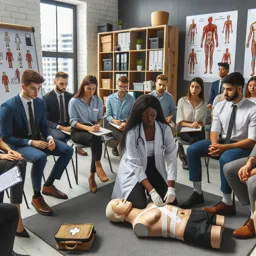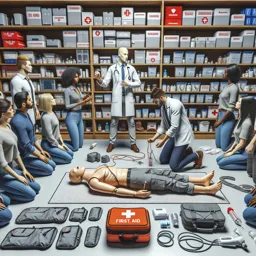Introduction
Accidents and medical emergencies can happen anywhere, including the workplace. Being prepared with workplace first aid knowledge can make a crucial difference in the outcome of these situations. Not only does it help protect your colleagues and prevent minor injuries from becoming serious, but it also fosters a safer, more responsible work environment.
Why Workplace First Aid Matters
Implementing workplace first aid protocols is about more than just compliance with regulations. It’s about saving lives and reducing the impact of injuries and illnesses. Prompt and correct first aid response can:
- Minimize the severity of injuries
- Reduce recovery times
- Lower absenteeism due to accidents
- Boost employee morale and confidence
- Demonstrate an organization’s commitment to health and safety
Common Workplace Emergencies
Workplaces vary, but some emergencies are common to almost all environments. It’s important to be prepared for incidents such as:
- Cuts, scrapes, and lacerations
- Burns
- Trips and falls
- Choking
- Heart attacks or cardiac arrest
- Asthma attacks or allergic reactions
- Eye injuries
Essential First Aid Skills for the Workplace
All employees should know basic first aid skills. Here are some essential techniques:
- CPR and AED Usage: Knowing how to perform cardiopulmonary resuscitation and use an automated external defibrillator can save lives during cardiac emergencies.
- Bleeding Control: Applying pressure, using bandages, and elevating wounds help control bleeding.
- Burn Care: Cooling burns under running water and covering with a sterile dressing are first steps.
- Choking Rescue: The Heimlich maneuver is a critical skill for relieving airway obstructions.
- Managing Fractures and Sprains: Immobilizing the affected area and applying cold packs reduce pain and swelling until professional help arrives.
- Treating Shock: Keep the person warm and comfortable, and seek medical assistance.
Creating an Effective First Aid Program
Every workplace should have a tailored first aid program, which includes:
- Clearly labeled and accessible first aid kits
- Trained first aiders within each department
- Clear procedures for contacting emergency services
- Up-to-date emergency contact information posted in visible locations
- Regular first aid training and drills
Conclusion
First aid in the workplace is not just a legal requirement—it’s a life skill that benefits everyone. By equipping yourself and your team with essential first aid knowledge and tools, you help make your workplace a safer and more resilient place for all.




























